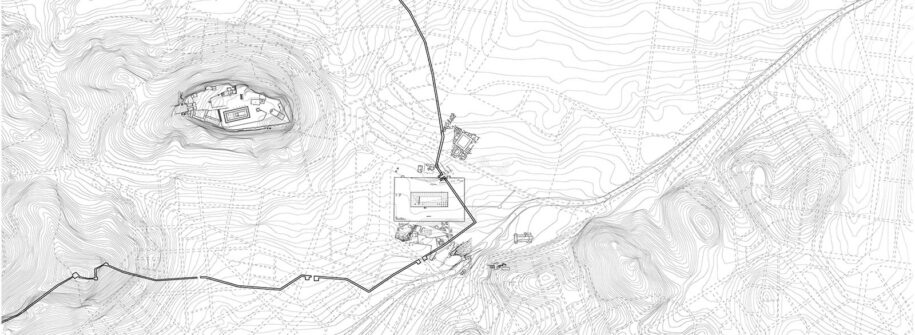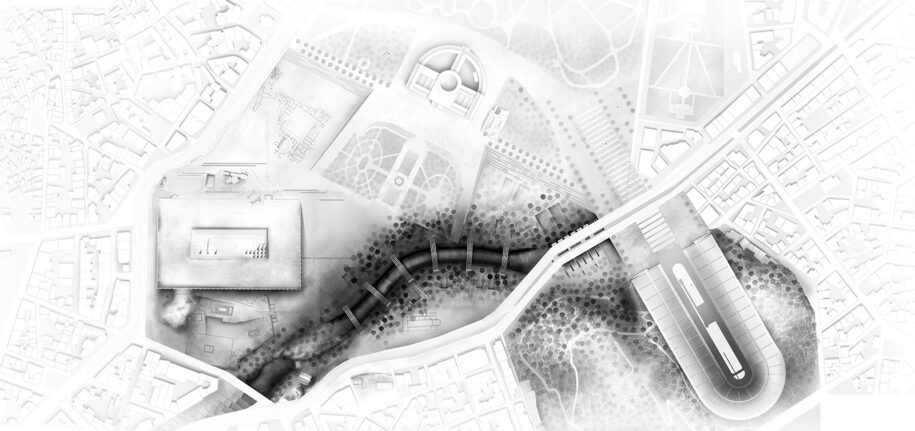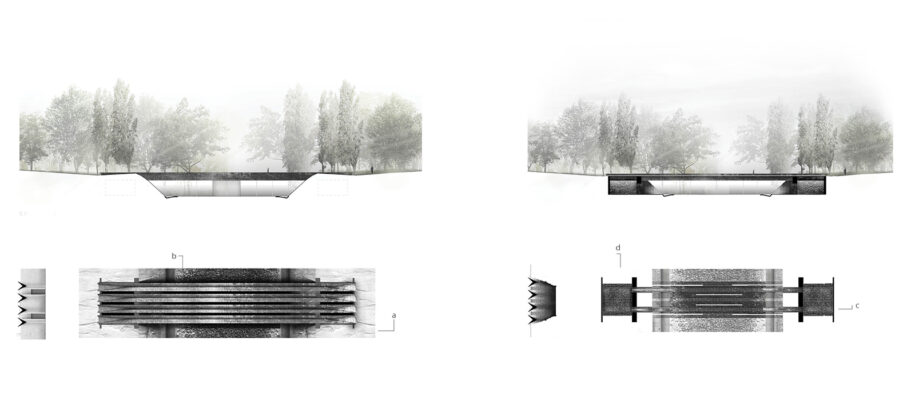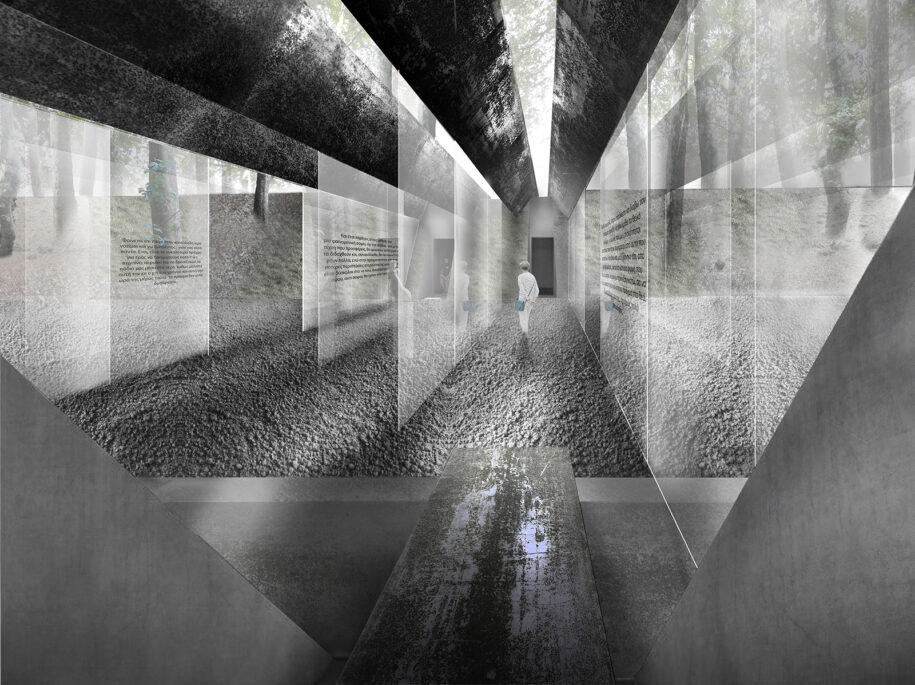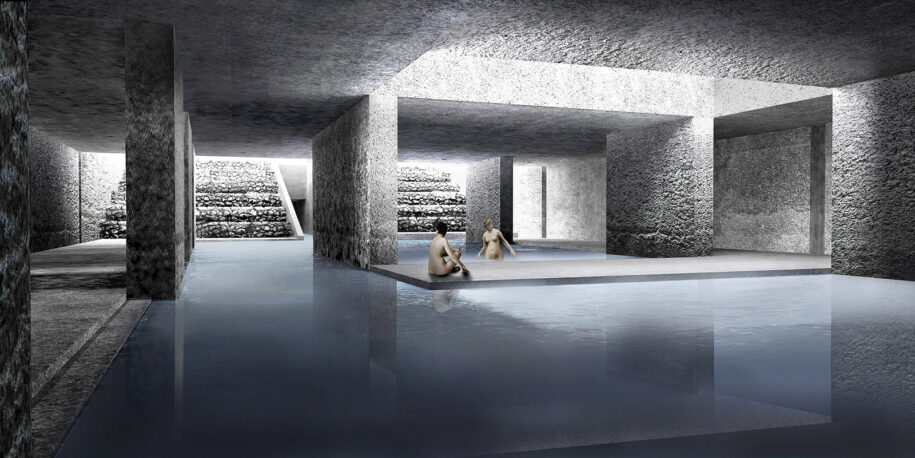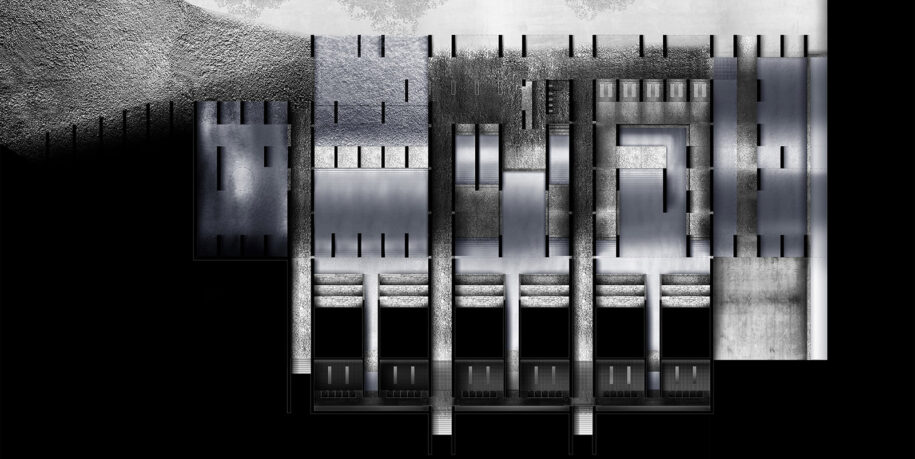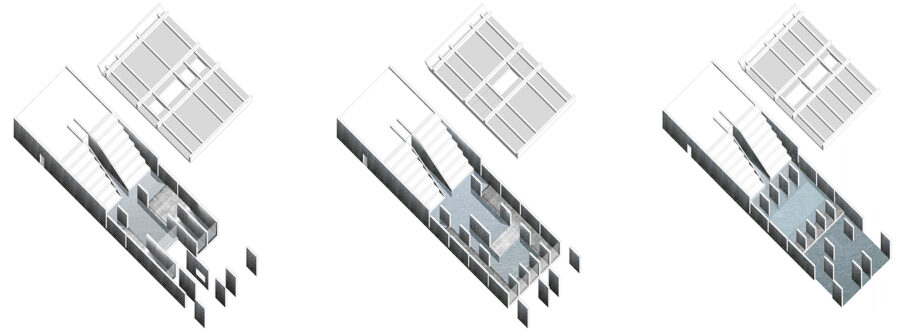Diploma thesis by Giorgos Chatzopoulos & Vicky Christakou focuses on the broader area of Ilissus River and its transformation into an archaeological garden with museum spaces thus introducing a multisensory condition between the city inhabitants and the past.
-text by the authors
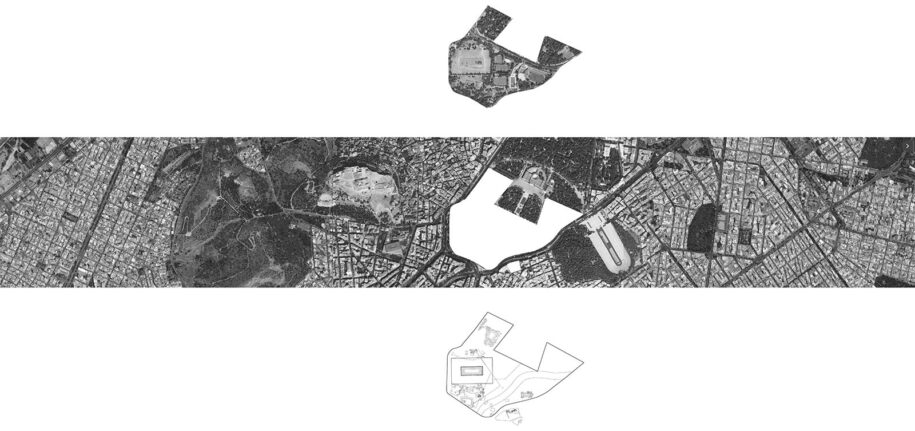
*Pharmakeia:
1) a nymph of the Ilissus River
2) common name during antiquity which referred to the administration of drugs [pharmakon], meaning ambiguously poisoning or healing
3) spring near the banks of the Ilissus River
4) a text written by the French philosopher J. Derrida, in which he deconstructs the Platonic dialogue Phaedrus
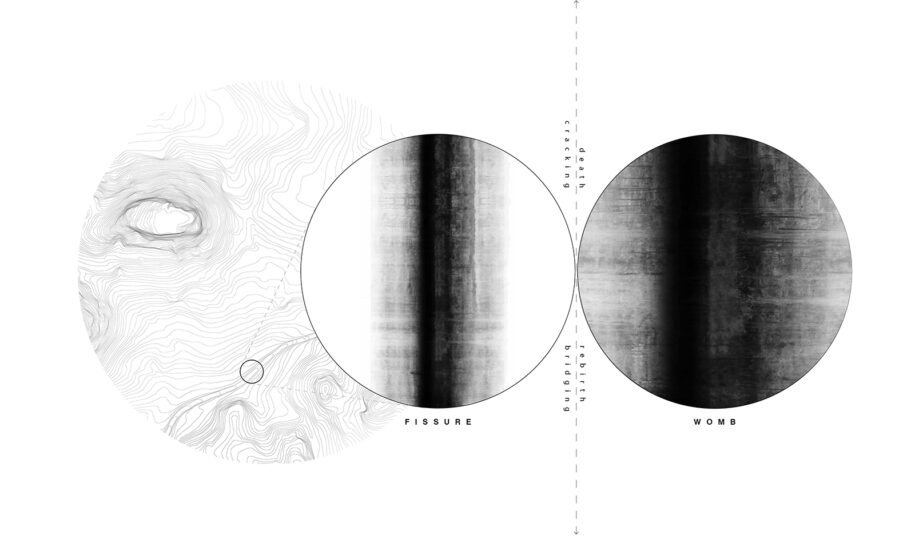
The Ilissian Field refers to the area, through which the Ilissus River once flowed, a mere 100 meters southeast of the Acropolis, in the center of Athens. Through the rites performed here, the Ilissian Field condensed together two ambiguous notions: firstly, the return to the womb, and secondly the balance on the fissure. The Ilissian Field also constituted the setting for the Platonic dialogue Phaedrus, where the mythical narratives and topological relationships of the Ilissian Field imbue every level of the dialogue. Plato describes the scene of Socrates and Phaedrus exiting the city walls, passing from the inner to the outer, deviating from the road and descending to the virtually dry river basin. They walk within the Ilissus, transforming the fissure into a way and they end up in an idyllic spot where a bridge is formed with the world of ideas. Today the greater part of the archeological space, as well as the Ilissus, is covered with derelict sports facilities, or else lacks public access.
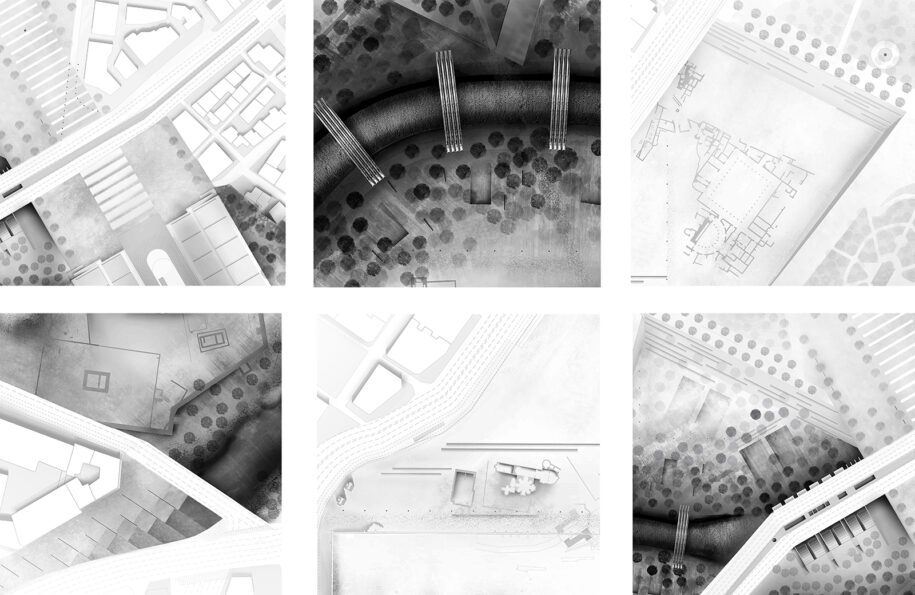
In our proposal, the whole area is excavated and transformed into an open stratigraphical garden, where archaeological remains together with the bed of the Ilissus rise to the surface, while accesses and movements are redefined.
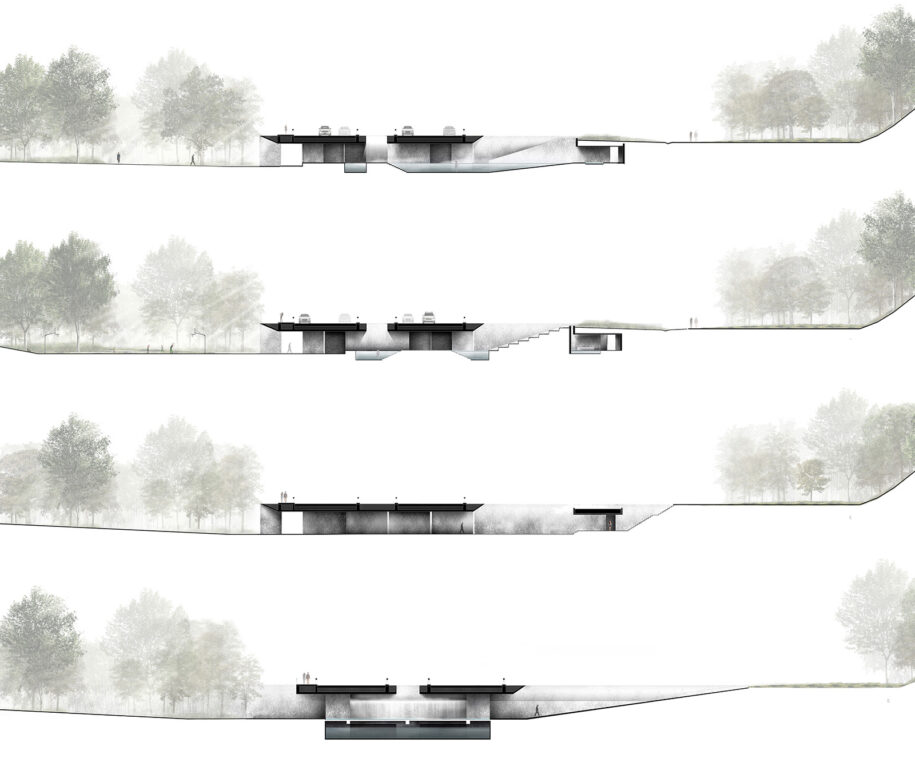
Our design is focused on the Ilissus River which, like an archaeological relic, is brought to the surface and transformed into a museum while at both ends the contact with the water is re-established, introducing a multisensory condition into the relationship between the city inhabitants and the past.
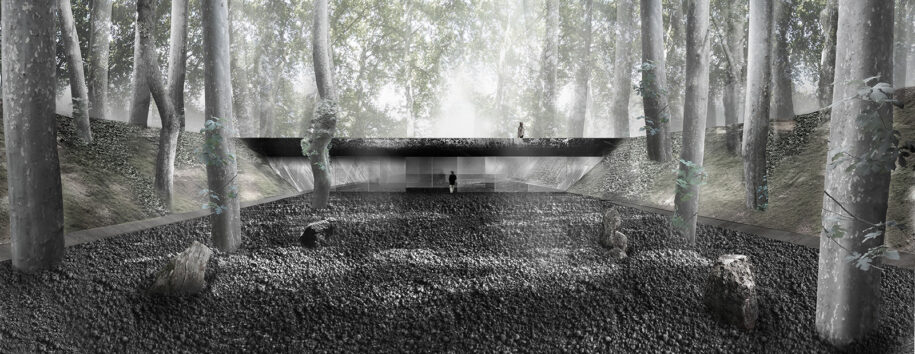
The conceptual tools for the intervention are extracted from the Platonic text.
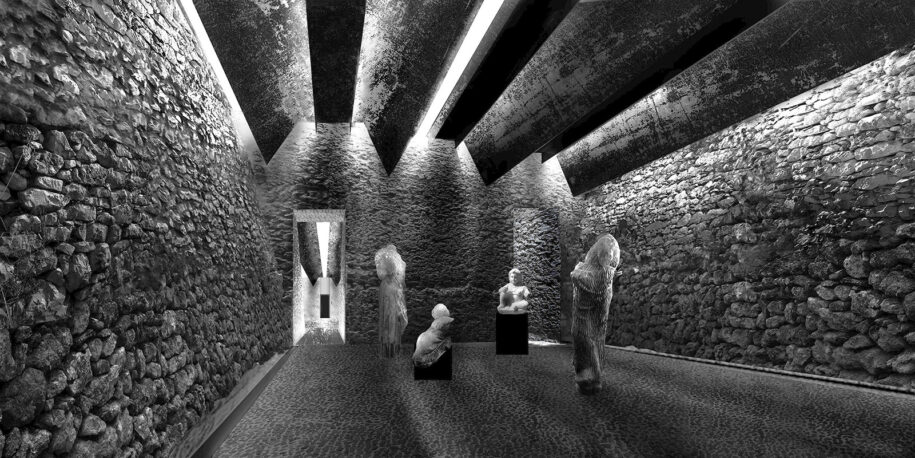
The dipole of bridging and fracturing which permeates the Platonic dialogue is enlarged upon in the planning on two levels. On a primary level the Ilissus fractures the city space, creating a horizontal discontinuity, while six identical museum constructions, the Pharmakeias, function as bridges connecting the two banks. On a secondary level the Ilissus is transformed into a path, which the visitor is invited to walk along, while the Pharmakeias function as fractures which double the time and distance of the walk. The reiterations of the Pharmakeias evoke a process of initiation, where enclosed museum spaces alternate with the riverine landscape.

At the eastern end of the Ilissus, underneath Kallirois Street, the bathing pools, are “excavated”. Their grotto-like atmosphere is accentuated by the application of only one material, rough exposed concrete, while the liquid element introduces a radically different experience of the body in the city. A structure of parallel concrete walls, emerging from and reflecting in the water, organizes the space and buttresses Kallirois Street.
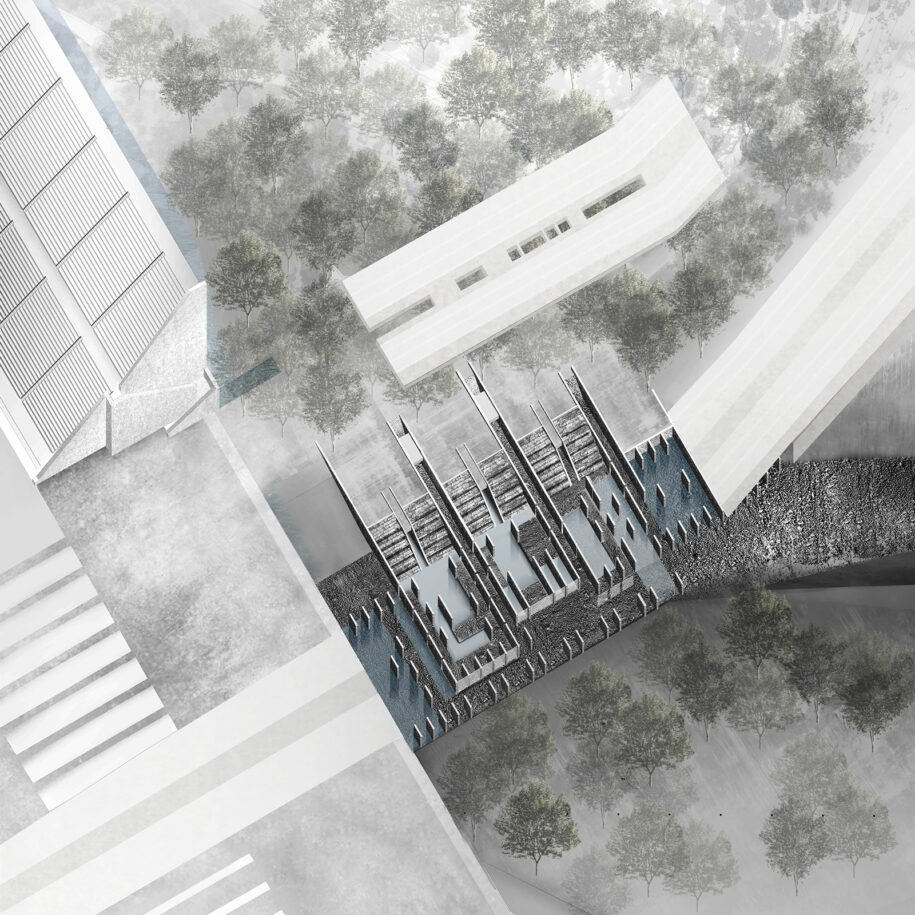
Facts & Credits
Project title Descending to Pharmakeias Water and Museum: the Ilissus River as Textual and Archaeological Landscape
Students Giorgos Chatzopoulos, Vicky Christakou
Date 2016
Course Diploma thesis
Supervisors Andreas Kourkoulas, Bouki Babalou
Consultants Vana Xenou, Manos Vordonarakis
Institution School of Architecture, National Technical University of Athens (NTUA)
READ ALSO: Project C | Award for thesis by Chrysi Vrantsi & Chrisanthi Vasileli
